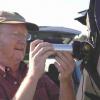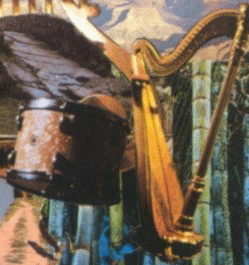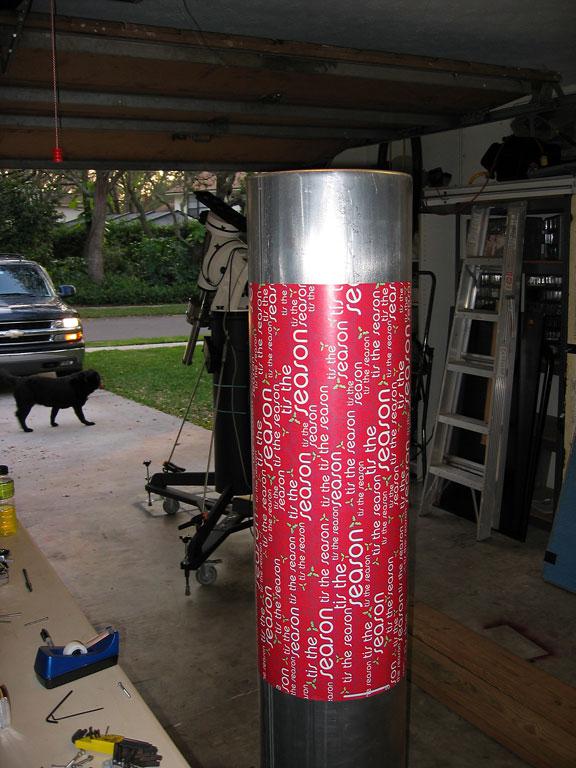
Squaring the Focuser
#1

Posted 07 March 2006 - 10:46 AM
Is there an accepted method of squaring your focuser?
Thanks
#2

Posted 07 March 2006 - 11:26 AM
I have read though that if it is very close and the secondary is exacly centered in the line of sight with respect to the focuser (done with the sight tube as the first step in collimation anyway), then any little inaccuracies will be nulled during the regular collimation process. I suppose that this would mean that the optical axis may not be exact with the physical axis of the OTA but this will only cause slight inaccuracies with a goto setup and have zero impact otherwise.
That's my take on it anyway. I'd like to hear what the collimation guru's have to say though to either confirm this info or correct me.
#3

Posted 07 March 2006 - 11:44 AM
The thing that makes me uneasy about this method though is that it relies on the tube being perfectly round and cut perfectly square at the end.
It also relies on the primary mirror being centered on the OTA axis and the diagonal being offset (unless a centered protocol is used.) Nevertheless, it is the accepted procedure--basic mechanicals first--optical alignment last.
I suppose that this would mean that the optical axis may not be exact with the physical axis of the OTA but this will only cause slight inaccuracies with a goto setup and have zero impact otherwise.
In most cases, the slight offset your referring to causes an impact to the DSC alignment that's less than the encoder resolution. With 8000 count encoders becoming more widely used, this offset could become more serious. However, along with higher accuracy encoders, software routines are also emerging that correct this error.
That's my take on it anyway. I'd like to hear what the collimation guru's have to say though to either confirm this info or correct me.
I'd say your take is pretty good! Although any uneasiness about "squaring" the focuser is really uncalled for--just keep it close.
#4

Posted 07 March 2006 - 11:50 AM
Mike
#5

Posted 07 March 2006 - 08:41 PM
Neil
#6

Posted 14 March 2006 - 11:03 PM
Your focuser really doesn't need to be square to the tube, it just needs to be pointing at your secondary mirror. To check, put a sight tube into the focuser, and shim the focuser base until the secondary appears centered on the sight tube's cross hairs. If you're using a laser, shim the focuser until the laser hits the center of the secondary.
When it comes to optical alignment, the tube of the telescope is irrelevant. How well the scope is cillimated has nothing to do with the optics' positions in (or on) the tube. Collimation is achieved when the various parts are in the proper place (both in terms of location and tilt) relative to eachother. When I made my 12.5" dobsonian, I purposely put the secondary mirror several inches farther away from the focuser than normal, and tilted the optical axis relative to the tube axis. I did this so that the baffling could be better, and overall the scope works great.
Collimation is easy because I have chosen the imaginary line going from the center of the primary to the center of the secondary as the optical axis of the system. To collimate, I first pointed the focuser at the secondary. I then tilted the secondary so that I could see the primary centered in the secondary. This procedure makes sure that the above defined system's optical axis is reflected through the focuser, and that the focuser is parallel to this axis. Then, just tilt the primary to align it's optical axis to the above defined system optical axis, and it's done. Notice that there is no mention of the tube or secondary offset. If the secondary appears centered in your focuser, then the secondary offset is automatically done. This may mean that the light doesn't make a 90 degree bend at the secondary, but it really doesn't matter.
Cheers
Mike Connelley
#7

Posted 15 March 2006 - 10:41 AM
To see if your tube is cut perfectly square on the end.....take a long strip of paper that has a straight edge. It should be longer than the circumference of the tube by several inches. Wrap it around and line up the overlap straight edge and snug it tight to the tube. This straight edge...all the way around is now square to the tube.
Neil
#8

Posted 16 March 2006 - 10:33 PM
On page 42 0f this forum I described in pictures, a way to perfectly square your focuser to both secondary mirror and primary especially in a slightly out of round tube, which most are. I also describe how to center both primary mirror and secondary spider in a less than round tube. Take a look and see if it's at all helpful.
Denise Libby
#9

Posted 21 March 2006 - 12:26 AM
You mention that the angle from the focuser to the secondary to the primary doesn't need to be exactly 90°. Im sure in real life any deviation from this 90° would be minimal in even a badly distorted tube but what are the effects of not being perfectly perpendicular? Intuition tells me that one side of the FOV would focus at a slightly different point than the other, though I have no numbers to say this is significant or negligible. The same intuition tells me that this angle would have to be fairly severe before any effects could be noticed.
#10

Posted 21 March 2006 - 07:08 AM
As long as the focuser axis and the primary mirror axis coincide, the focal plane will be perpendicular and centered inside the focuser regardless of the intercept angle (where the two axes meet at the diagonal mirror.)...the angle from the focuser to the secondary to the primary doesn't need to be exactly 90°. ...but what are the effects of not being perfectly perpendicular? Intuition tells me that one side of the FOV would focus at a slightly different point than the other...
#11

Posted 21 March 2006 - 11:12 AM
As long as the focuser axis and the primary mirror axis coincide, the focal plane will be perpendicular and centered inside the focuser regardless of the intercept angle (where the two axes meet at the diagonal mirror.)
Vic, Thanks for clearing that up for me!
Mike, I agree that in most cases the tube itself has no bearing on collimation as long as the mirrors are oriented properly with respect to each other. But if a sled focuser is used then the alignment of the optical axis to the tube, or more accurately the axis of movement of the focuser, then becomes a little more critical. The possibility exists that during focuser movement that the axis of the primary may move away from the focuser axis. This is a little nitpicky and isn't intended to take away any of the accuracy of your statement.
Thanks.
Ryan
#12

Posted 21 March 2006 - 12:37 PM
Mike, welcome to Cloudy Nights' Forums!
#13

Posted 21 March 2006 - 12:44 PM
Intuition tells me that one side of the FOV would focus at a slightly different point than the other,
Your intuition plays tricks on you. Collimation makes this irrelevant.
The only effect is to make the secondary appear slightly elliptical from the focuser (the ratio of the major axis to the minor axis of a diagonal is sqrt(2), and it only appears circular from the focuser with an intercept angle of 90°), which makes the fully illuminated field elliptical (i.e. slightly smaller on one axis).
#14

Posted 21 March 2006 - 01:12 PM
In case of rotateble tube an object will not stay in the centre of the field, it also would be a problem when a telescope is moved from the west position to the east position of its German(or German-type) equatorial mount and even more important when using (electronic) setting circles.
What I'm saying is : the tube is pointing in a certain direction but the optics is pointing to a slightly different point. But when tilting/rotating the tube to another point in the sky the error will in extreme cases doubled.
#15

Posted 21 March 2006 - 02:23 PM
Of course, it's fairly rare to find all of the mechanicals so precisely executed. More often, there are small errors--a hundredth here, a few hundredths there. These errors may compound the problem--or just complicate the solution. If the end user finds that these errors limit the usefulness of the scope or the various numerical accessories, then a solution may need to be found. Generally speaking, the user approaches collimation with a respectful consideration for the minor mechanical errors that underlie the precision axial alignment of the optics.


























